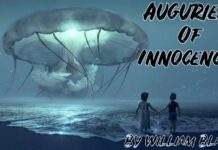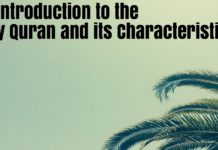A Divine Image II Critical Analysis By William Blake

This song is found in only one copy of the ‘Song of Experience’, that is in the reading room of the British Museum and as the watermark of the paper is dated 1832, it must have been printed from Blake’s engravings after his death. It was not included in any of the copies issued by Blake himself.
‘A Divine Image’ in the ‘Songs of Experience’ is a comment of Experience on ‘The Divine Image’ in the ‘Songs of Innocence.’ The evil attributes–cruelty, jealousy, terror, secrecy-he says, are human. And the implication is that man, created in the image of God, bears some imperfections which belong rather to the nature of man than to the idea of God unless we should invest God with the imperfections.

The poem is a very straightforward summary of the traits that describe and decorate man in the state of Experience. The place of mercy, pity, peace, and love has now been taken by cruelty, jealousy, terror, and secrecy; mercy pity, peace, and love are the only ideals one can cherish so long as one has not had the experience of the hard realities of the world.
In Experience, cruelty, jealousy, terror, and secrecy are so universal that they could well be regarded as parts of the human body like hands and feet. Mercy, pity, peace, and love, the united man with God; cruelty, jealousy, terror, and secrecy are patents of man.
“The Divine Image I” Critical Analysis By William Blake

























great blog very nice articles I will follow you continuously sohbet odaları
I don’t think the title of your article matches the content lol. Just kidding, mainly because I had some doubts after reading the article.
We offer a vast selection of high-quality medicines for various needs.
Our online pharmacy ensures fast and safe shipping wherever you are.
All products is supplied by licensed manufacturers so you get effectiveness and reliability.
Easily search through our online store and place your order hassle-free.
Need help? Our support team is ready to assist you whenever you need.
Prioritize your well-being with our trusted e-pharmacy!
https://www.linkcentre.com/review/www.malaysialistings.com/listings/acyclovir-400-mg-effective-treatment-for-viral-infections
Фанаты слотов могут легко получить доступ к актуальное альтернативный адрес онлайн-казино Champion и наслаждаться любимыми слотами.
В казино можно найти разнообразные онлайн-игры, от ретро-автоматов до современных, а также новейшие автоматы от мировых брендов.
Когда основной портал оказался недоступен, рабочее зеркало Champion даст возможность без проблем войти и продолжить игру.
https://casino-champions-slots.ru
Все возможности полностью работают, включая открытие профиля, финансовые операции, и акции для игроков.
Заходите через обновленную ссылку, и не терять доступ к казино Чемпион!
Чем интересен BlackSprut?
BlackSprut привлекает внимание многих пользователей. Почему о нем говорят?
Этот проект предоставляет разнообразные опции для тех, кто им интересуется. Интерфейс системы выделяется простотой, что делает его понятной без сложного обучения.
Стоит учитывать, что этот ресурс обладает уникальными характеристиками, которые делают его особенным в своей нише.
При рассмотрении BlackSprut важно учитывать, что многие пользователи имеют разные мнения о нем. Многие отмечают его функциональность, другие же рассматривают неоднозначно.
В целом, данный сервис остается объектом интереса и вызывает внимание разных слоев интернет-сообщества.
Свежий домен БлэкСпрут – здесь можно найти
Хотите найти актуальное зеркало на БлэкСпрут? Мы поможем.
bs2best at сайт
Сайт может меняться, и лучше иметь актуальный домен.
Мы следим за актуальными доменами чтобы предоставить новым линком.
Посмотрите рабочую ссылку у нас!
Understanding women’s health issues requires specific knowledge throughout life. Learning about menstrual health, pregnancy, menopause, and related conditions is crucial. Knowing about preventative screenings like Pap smears and mammograms is vital. Familiarity with medical preparations specific to women’s health is important. This includes hormonal therapies, contraceptives, and treatments for gynecological conditions. Access to trusted information empowers women to manage their health. The iMedix podcast addresses gender-specific health topics comprehensively. It’s a health care podcast relevant to women at all life stages. Explore the iMedix best podcasts for women’s health discussions. iMedix provides online health information tailored to diverse needs.
На этом сайте вы можете испытать обширной коллекцией игровых слотов.
Эти слоты славятся живой визуализацией и захватывающим игровым процессом.
Каждый игровой автомат предоставляет уникальные бонусные раунды, увеличивающие шансы на выигрыш.
1xbet казино
Слоты созданы для любителей азартных игр всех мастей.
Можно опробовать игру без ставки, и потом испытать азарт игры на реальные ставки.
Испытайте удачу и насладитесь неповторимой атмосферой игровых автоматов.
На этом сайте вы можете играть в большим выбором игровых слотов.
Эти слоты славятся яркой графикой и увлекательным игровым процессом.
Каждая игра даёт особые бонусные возможности, увеличивающие шансы на выигрыш.
1xbet игровые автоматы
Игра в игровые автоматы предназначена любителей азартных игр всех мастей.
Можно опробовать игру без ставки, а затем перейти к игре на реальные деньги.
Испытайте удачу и насладитесь неповторимой атмосферой игровых автоматов.
На нашем портале вам предоставляется возможность испытать большим выбором слотов.
Слоты обладают яркой графикой и интерактивным игровым процессом.
Каждый слот предлагает индивидуальные бонусные функции, увеличивающие шансы на выигрыш.
1win games
Игра в игровые автоматы предназначена игроков всех уровней.
Можно опробовать игру без ставки, после чего начать играть на реальные деньги.
Испытайте удачу и насладитесь неповторимой атмосферой игровых автоматов.
I have recently started a blog, the information you offer on this website has helped me greatly. Thanks for all of your time & work.
Nice read, I just passed this onto a friend who was doing some research on that. And he actually bought me lunch because I found it for him smile So let me rephrase that: Thanks for lunch!
Yay google is my king assisted me to find this great web site! .
On this platform, you can access lots of online slots from leading developers.
Users can enjoy retro-style games as well as modern video slots with high-quality visuals and bonus rounds.
Even if you’re new or a casino enthusiast, there’s a game that fits your style.
casino games
All slot machines are ready to play anytime and compatible with laptops and tablets alike.
All games run in your browser, so you can get started without hassle.
The interface is intuitive, making it simple to browse the collection.
Join the fun, and dive into the thrill of casino games!
Here are presented valuable special offers for 1x Bet.
Such codes give access to acquire supplementary incentives when participating on the platform.
Each provided promotional codes are always up-to-date to assure their relevance.
With these codes it is possible to significantly increase your opportunities on 1xBet.
https://remonthome.com/files/pgs/lechenie_i_diagnostika_hlamidioza.html
Furthermore, step-by-step directions on how to implement promo deals are available for ease of use.
Keep in mind that certain codes may have limited validity, so look into conditions before employing.